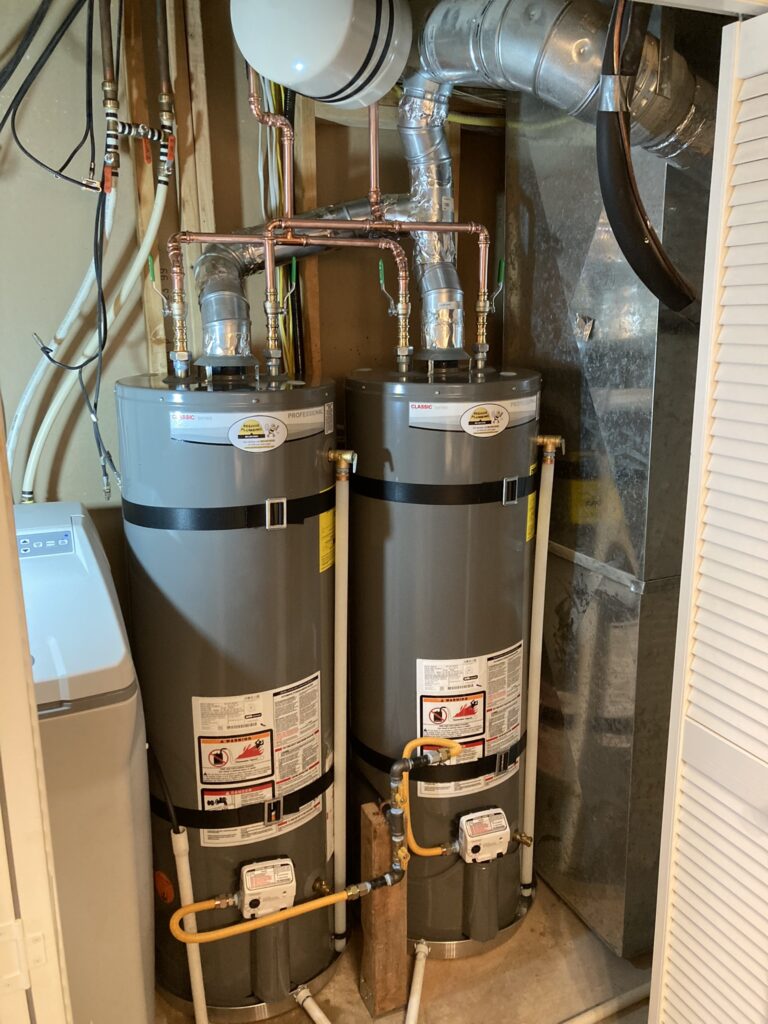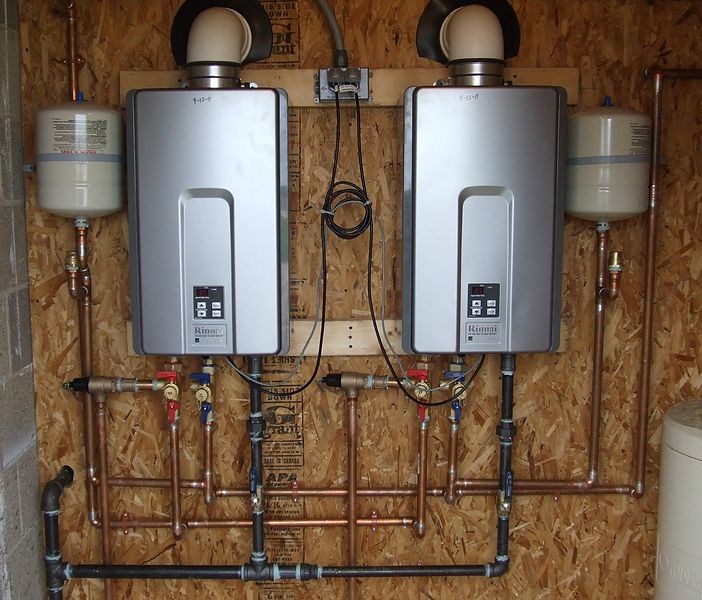The Ultimate Overview to Safe and Effective Hot Water Heater Setup
The setup of a water heating unit is an essential job that requires thorough focus to information and adherence to safety standards. Whether upgrading an existing system or setting up a new one, recognizing the foundational steps is important for making certain both functionality and safety and security. From selecting the ideal design to navigating neighborhood building codes, the process can be intricate (water heater installation). As we explore the important parts of a successful installment, it is very important to think about the possible challenges that could emerge if not come close to with care. What are the key variables to keep in mind to stay clear of common mistakes?
Picking the Right Water Heater
When selecting a water heating unit, house owners have to think about numerous crucial variables to make sure optimum performance and performance. The very first factor to consider is the sort of water heater, which commonly consists of tankless, tank, warm pump, and solar designs. Each kind has its own benefits and disadvantages, influencing power intake, healing prices, and installation requirements.
Next, it is important to analyze the dimension or ability of the hot water heater. This relies on the family's hot water need, which can differ based on the number of passengers and their use patterns. An unit that is too tiny will lead to poor warm water supply, while an extra-large device may throw away energy.
Energy performance is an additional crucial element. Homeowners should look for devices with high power element (EF) scores, as these indicate far better efficiency and lower operating expenses gradually. Furthermore, the gas source-- electrical energy, natural gas, or propane-- will influence both installment costs and continuous costs.
Planning For Setup
Correct prep work is critical for an effective water heating system installation, and there are numerous vital steps homeowners must comply with. Assess the setup location to ensure it conforms with neighborhood building codes and safety laws. This consists of monitoring for appropriate air flow, clearance space, and ease of access for upkeep.
Following, switch off the water and power or gas to the existing water heating system to stop any type of accidents during the installation procedure. Drain the old system entirely to stay clear of any type of spills, and detach it from the plumbing and source of power.
Furthermore, collect appropriate paperwork such as service warranties, installation guidebooks, and local plumbing codes to make certain conformity. This is additionally the moment to figure out if any kind of upgrades are needed for plumbing or electric systems to accommodate the brand-new unit.
Lastly, think about alerting your next-door neighbors if the setup might create disturbances, and make certain that pets and kids are maintained clear of the workplace. By taking these primary actions, house owners can promote a smoother installation procedure, lessening potential hold-ups and difficulties.
Devices and Materials Needed
A well-organized toolkit is necessary for a successful hot water heater setup. Having the right devices and materials handy not just simplifies the process yet likewise ensures safety and conformity with local codes.
First, collect basic hand devices, consisting of a pipe wrench, adjustable wrench, screwdrivers (both level and Phillips), pliers, and an utility knife. These will certainly help in eliminating old fittings and safeguarding brand-new connections. A drill with proper bits may be needed for mounting and safeguarding the water heater.
Following, guarantee you have plumbing supplies such as Teflon tape, pipeline fittings, and versatile hose pipes for linking water lines. For gas water heaters, a gas line adapter and a pipe joint compound are crucial. Think about also having a level to make sure correct alignment.
Safety and security equipment ought to not be forgotten; handwear covers and security goggles protect against prospective threats. Validate the accessibility of necessary materials like a new water heater, development tank (if needed), and any added insulation or airing vent components.
Step-by-Step Installation Refine

Next, prepare the new hot water heater by placing it in the designated location, guaranteeing it is degree and stable. Connect the cold water supply line to the inlet and the warm water line to the outlet, making use of suitable fittings. For gas heaters, make sure the gas line is effectively attached and that all fittings are protected.
When the pipes connections are established, attach the power supply. For electrical heaters, this includes circuitry the system to the electrical panel, following local codes. For gas devices, ensure to mount a venting system that meets safety standards.

Safety Tips and Best Practices
Ensuring safety during water heating system installment is critical to stop accidents and ensure a smooth operation. Turn off the power supply or gas line to the existing system prior to beginning any kind of work. This will reduce the threat of electrical shock or gas leaks. Additionally, it is essential to put on ideal individual protective equipment (PPE), such as gloves and safety goggles, to guard against potential threats.
Before setup, inspect the area for any type blog here of signs of water damages, mold, or architectural concerns that may present risks throughout or after the installment procedure. Make certain that the setup abides by neighborhood building ordinance and manufacturer guidelines to stay clear of future obligations. water heater. It is advisable to have a fire extinguisher nearby, particularly when functioning with gas units
Throughout the installation, keep appropriate air flow to avoid gas build-up. If the job seems overwhelming, take into consideration hiring an accredited specialist to guarantee the job is completed safely and effectively. Lastly, after setup, test the system completely to validate correct operation, looking for leakages or uncommon sounds. By sticking to these safety and security pointers and best practices, you can make certain an effective water heating unit installment.
Conclusion
In final thought, effective use this link installation of a water heater needs precise planning and adherence to safety methods. For those doing not have experience, employing the services of a qualified professional is suggested to ensure ideal security and capability of the water home heating system.
Make certain the water supply is transformed off and the existing water heating system is disconnected. Connect the cold water supply line to the inlet and the hot water line to the outlet, making use of suitable installations.Guaranteeing safety during water heating system installation is critical to prevent accidents and make certain a smooth operation.Prior to installation, check the area for any kind of signs of water damage, mold and mildew, or structural concerns that may posture dangers throughout or after the setup process. By sticking to these security tips and best techniques, you can make sure a successful water heating unit setup.